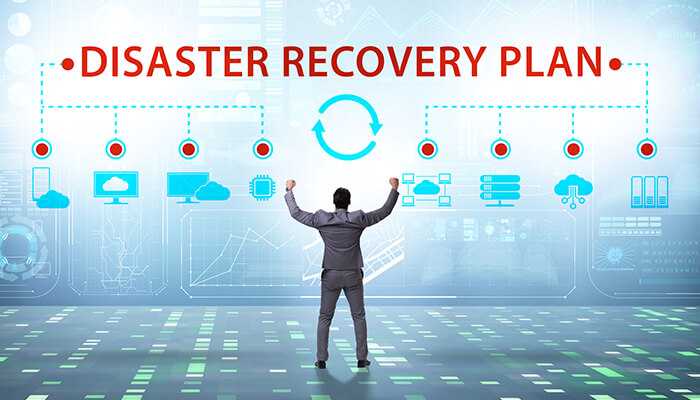Have you ever considered the devastating impact a disaster could have on your business? From natural calamities to cyberattacks, the potential risks are vast and unpredictable. A single disruption can have far-reaching consequences, impacting revenue, reputation, and even survival. With that in mind, this article will explore the essential components of a comprehensive disaster recovery plan (DRP) and provide practical guidance on how to develop, implement, and maintain a plan that can weather any storm.
1. Risk Assessment and Business Impact Analysis (BIA)
To start, conduct a thorough risk assessment to identify the potential threats that could impact your business. These could include natural disasters like floods and fires, cyberattacks, power outages, or equipment failures. Once you’ve identified the risks, carry out a Business Impact Analysis (BIA) to understand how these events would affect various operations.
At this stage, it’s also essential to explore business continuity solutions that can help mitigate these risks by ensuring that necessary services and operations can continue with minimal disruption. This step involves determining the financial implications, potential customer disruption, and the regulatory risks tied to each event. Next, prioritize business functions based on their importance and criticality.
2. Define Recovery Objectives
An essential part of your disaster recovery plan is defining clear recovery objectives, starting with the Recovery Time Objective (RTO), which specifies the maximum allowable downtime for critical business operations. This objective will guide how quickly you need to restore operations after a disaster strikes.
Equally important is the Recovery Point Objective (RPO), which defines the maximum acceptable amount of data loss. For instance, if your RPO is set to four hours, it means that your data backup system must be designed so that no more than four hours of work or data is lost if a failure occurs.
3. Develop a Disaster Recovery Strategy
Once you’ve established your objectives, you can focus on developing a disaster recovery strategy. Start by implementing robust data backup systems, including both cloud-based and off-site backups. Make sure these backups are automated and secure through encryption.
Redundancy is another critical component of your strategy, ensuring that you have backup systems like alternative servers, redundant power supplies, and secondary internet connections. You should also consider cloud-based recovery services to facilitate rapid data and application recovery. Collaborating with third-party services that offer disaster recovery support can also be invaluable, as they can provide equipment or assist with recovery efforts during a crisis.
4. Create a Communication Plan
Communication is vital during a disaster, so you need to develop a comprehensive communication plan. Internally, make sure there’s a clear process for notifying employees and disseminating instructions. Appoint a communications team responsible for updating employees on the situation.
For external communication, prepare templates and protocols for informing customers, vendors, and stakeholders. This ensures transparency about how the disaster affects them and outlines the recovery steps being taken. Additionally, a chain of command within the disaster recovery team should be established so everyone knows their roles, responsibilities, and who to report to in critical situations.

5. Establish Recovery Procedures
Your disaster recovery plans must include step-by-step recovery procedures for each critical business function. These procedures should clearly outline how to restore network access, recover lost data, or resume production or customer-facing services.
If your primary office or data center becomes unavailable, plan alternative work locations, such as remote work setups or temporary offices. Identify the specific equipment and resources needed for recovery, such as backup hardware, software licenses, or additional personnel, to ensure a smooth and efficient restoration of operations.
6. Train Employees and Conduct Regular Drills
Training employees is crucial to ensuring the disaster recovery plan is effective. All staff should be aware of the disaster recovery procedures, and special training should be provided to those on the disaster recovery team.
Regular disaster recovery drills are essential to testing the plan’s effectiveness. Simulating different disaster scenarios can help identify gaps or areas for improvement. After each drill, review the outcomes, gather feedback, and adjust the disaster recovery plan as necessary to improve future performance and resilience.
7. Ensure Compliance with Regulations
Another key element is incorporating regulatory compliance into your disaster recovery plan. Ensure that your plan aligns with all relevant regulations, especially in industries governed by strict data protection laws, such as the Health Insurance Portability and Accountability Act (HIPAA), the General Data Protection Regulation (GDPR), or industry standards like ISO 22301.
Additionally, work closely with your insurance providers to ensure your plan is in sync with your business insurance policies, including coverage for property damage, liability, and business interruption, so you are fully protected financially in case of a disaster.
8. Monitor and Update the Plan Regularly
Finally, a disaster recovery plan must evolve. Regular reviews and updates are necessary to keep the plan aligned with your business’s current needs and technological changes. Additionally, after any actual disaster or major recovery effort, conduct a thorough post-disaster analysis to identify lessons learned. This analysis will allow you to refine your plan, ensuring that it continues to meet your business’s recovery objectives and provides a reliable framework for responding to future crises.
Conclusion
Remember, a well-prepared disaster recovery plan is not just a document; it’s a proactive investment in your business’s resilience. By investing time and resources into creating and maintaining a comprehensive plan, you’re demonstrating your commitment to protecting your assets, safeguarding your reputation, and ensuring the long-term viability of your organization.



